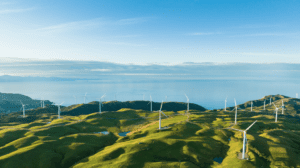The energy transition path isn’t linear, but engagement is the best compass: Pzena
The mainstream energy transition narrative has evolved since we last wrote about the issue in February 2021.
We are observing more explicit acknowledgement of the myriad of political, social, and economic tradeoffs that must be navigated. Catalysts for this shift include changes in the macroeconomic environment, the rising importance of energy security, and uneven return profiles for some clean technology investments.
Against this backdrop, companies have adjusted energy transition plans to maintain credibility and sources of competitive advantage. Our approach to the energy transition, however, remains unchanged. We have always believed in taking a dynamic fundamental view of the companies we invest in.
Below we outline how we continue to think about the evolving demands of the energy transition.
What has changed?
Macroeconomic environment
Against the backdrop of the war in Ukraine and recent periods of high inflation, the policy priorities of the energy transition now go beyond ‘decarbonization at all costs’ to include previously unacknowledged tradeoffs with energy security and affordability.
Updated view of near-/medium-term oil and gas demand
The 2021 IEA Net Zero Scenario laid out a pathway for the world to reach net-zero emissions by 2050 with the technology viable at the time. While not intended as a deterministic prediction, a series of attention-grabbing headlines followed about the need to cease all “new” investments in oil and gas. However, demand for oil and gas is still rising (see Figure 1).
Not only are trillions of barrels of oil needed in all scenarios, but so is “new” investment to meet the energy needs of the global economy. Natural gas is expected to remain an important transition fuel for longer than oil, with demand peaking in the mid-2030s. This is important if we are to rapidly replace coal, which still comprises 30 per cent of the global energy mix.

Clean technology returns
The recent disappointing return profiles for some clean technology investments have been notable. Offshore wind in particular was disproportionately affected by post-Covid supply chain issues and inflation. Structural challenges also remain in the deployment of wind and solar at scale, including resolving intermittency and grid stability concerns; despite deployment costs coming down, renewables projects continue to earn just 5-8 per cent on their equity compared to more than 15 per cent for oil and gas. Many technologies acknowledged as important to reach net zero by 2050 are still at relatively low TRLs and/or are not yet fully commercially viable.
Despite these challenges, there are signs of growing scale. While not the only important measure of progress, the cost competitiveness of renewable energy has improved significantly (see Figure 2).

According to the IEA, clean energy investment is expected to reach $2 trillion for the first time in 2024, putting the clean-energy-to-fossil-fuel investment ratio at roughly 2:1. Renewables investments are expected to account for $770 billion in 2024, which represents roughly 10 times that of investments in coal and gas-fired electricity generation.
Investment implications
When evaluating the impact of these shifts on our investments, signs of scale in the energy transition must be balanced with the economic, geopolitical, and regulatory realities.
Sharpening of energy transition plans
Short to medium-term, companies have had to acknowledge inherent decarbonisation trade-offs more explicitly and focus on areas of true competitive advantage. Shell’s March 2024 energy transition update was interpreted by some as a weakening of previous climate targets. However, our view is that the changes to Shell’s transition plan better reflect new market realities and are therefore credible. Shell’s unique competitive advantage in LNG will allow it to play a key role in energy affordability and security for years to come, while Shell continues to invest in areas of competitive advantage within the energy transition (carbon capture, biofuels, etc.).
ArcelorMittal (MT) maintaining previously issued green capex guidance (while peer SSAB recently increased green capex guidance 20-30 per cent, citing cost inflation) was interpreted by some as a weakening of decarbonisation commitments.
Our view is that MT’s more cautious approach is prudent because it maintains capital discipline in the short term and allows MT to keep decarbonization technology options open in the medium to long term. MT maintains a competitive advantage by proactively securing government funds and using its global footprint to import lower carbon material into Europe from geographies, such as Brazil, where it may be cheaper to decarbonize steel production.
Innovation
Innovation is required to meet the goals of the energy transition, and we see attractive sources among industry incumbents from traditionally higher emitting sectors. Incumbents have substantial technological know-how that can be effectively deployed into low carbon solutions, such as hydrogen, sustainable fuels, carbon capture, and circular plastics. For example, Shell’s CANSOLV carbon capture system is one of the industry’s leading solutions. Equinor is taking the lead on developing a comprehensive carbon capture solution for the European industry with its Northern Lights project, while Exxon is doing the same for the US with its Houston carbon hub project.
Industry incumbents are also increasingly partnering with innovative early-stage clean technology start-ups, largely in private markets. For example, Vale signed an MOU with GravitHY, founded in 2022 as a green iron pure play, with the intent to become operational in France by 2028. Vale will act as the number one supplier for high-grade iron ore and as the technology partner on developing lower carbon direct reduced iron and green briquettes technology.
The innovation potential for industry incumbents is also supported by academic literature. For example, 15 per cent of the energy sector’s patent base are green, and utilities and industrial commodities also have high green patent shares.
Conclusion
As when we first wrote about this topic in 2021, our view is that the path of the energy transition is not necessarily linear. A one-size-fits-all approach oversimplifies the realities for companies balancing competing priorities, particularly as lower carbon technologies continue to mature. Deep fundamental research matters now more than ever to figure out which companies are best positioned for the energy transition, not just at a specific point in time but over time.
We continue to analyse competitive advantage and the innovation potential required to build differentiated and profitable energy transition strategies. Engagement remains the best tool at our disposal to encourage companies to deploy capital effectively and build shareholder value over time.










